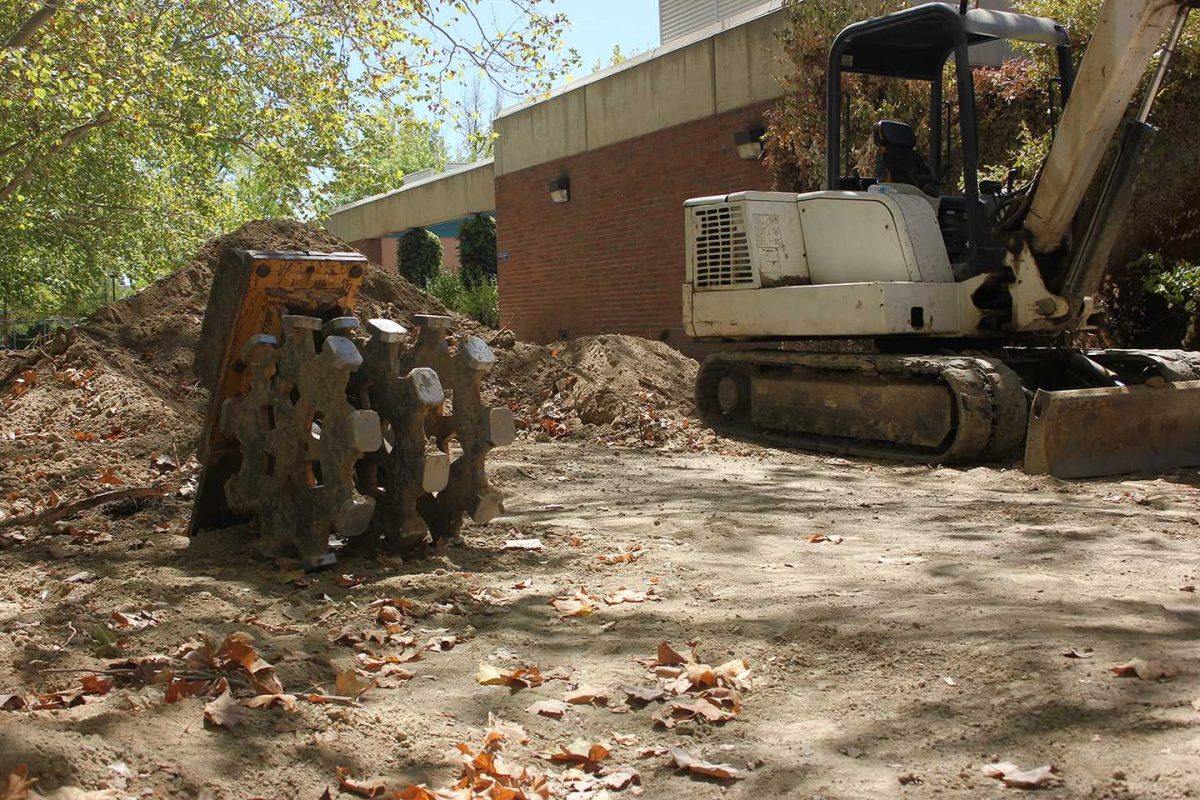CRC A/C system gets new pipes
The construction to CRC’s HVAC system is estimated to end Nov. 1. The replacement of the pipes will provide more control to the water and air temperatures throughout campus buildings.
Walking through campus, it is nearly impossible to miss the construction that has left giant trenches throughout the grounds with little information as to what their purpose may be.
The $1.7 million construction project, nicknamed the Big Dig, is focused on replacing the main hydronic infrastructure pipes surrounding the inner core of the campus. These pipes control the college’s heating and cooling systems connected to the A/C, or the HVAC system, as well as the temperatures for the sinks and showers on campus using water flow, said Director of Administrative Services Augustine Chavez.
The pipelines, which are the same ones from the initial construction of the campus, needed to be replaced because of rust buildup, leaks and they simply have passed their lifespan, Chavez said.
“If we can increase water flow then we’ll have better control of temperatures,” Chavez said. “The other thing is to be green and ensure that we’re not leaking any water as well. It would make us more energy efficient.”
Administrative Services worked with the contractors and project managers in the Facilities Management Department, to make sure the impact of the construction to the campus and its students were handled appropriately.
Chavez said their biggest challenges were related to student access on campus as well as the safety of students and staff.
“Particularly, the dig along the quad was very sensitive,” Chavez said. “We wanted to make sure we maintained access.”
He said there was a rush to lay down the concrete on the main walkway between the library and the Community Athletic Center before the beginning of the fall semester, specifically so student access would not be impeded.
Despite the Administrative Services’ efforts, some students said they were still inconvenienced by the construction.
“I think they can do a little better,” said 18-year-old kinesiology major Chavnair Stocker. “A few more signs would be nice and behind the old basketball court there’s no signs so I had to turn around.”
In an attempt to keep students safer and more aware, fencing was placed around each trench, along with various caution cones and signs. On the construction sites themselves, workers were supposed to make sure heavy machinery was being monitored by a flagger on the ground to keep an eye out for pedestrians.
Some students said this was enough to keep people safe.
“Everything is pretty blocked off and secure,” said Chris Mejia, a 22-year-old biology major. “It’s not like anyone can hurt themselves unless they go out of their way.”
Others voiced their concern with the lack of caution by the workers.
“They had a crane to dig up the dirt with and it blocked the back pathway,” said 18-year old undeclared Julie Wright. “They almost hit a student.”
Being in charge of campus operations, Chavez would be the one to speak to with complaints or comments on the construction.
“If there’s ever any issues then just let me know,” Chavez said. “I’m happy to see what we can do.”
The estimated date of completion for the project is Nov. 1, but students should expect all of the trenches to be filled by mid October.
With this project and the recent light rail construction, there are no other major projects planned for the rest of the semester.
Staff writers, Quincie Pruitt and Mariah Rios, contributed to this story.

